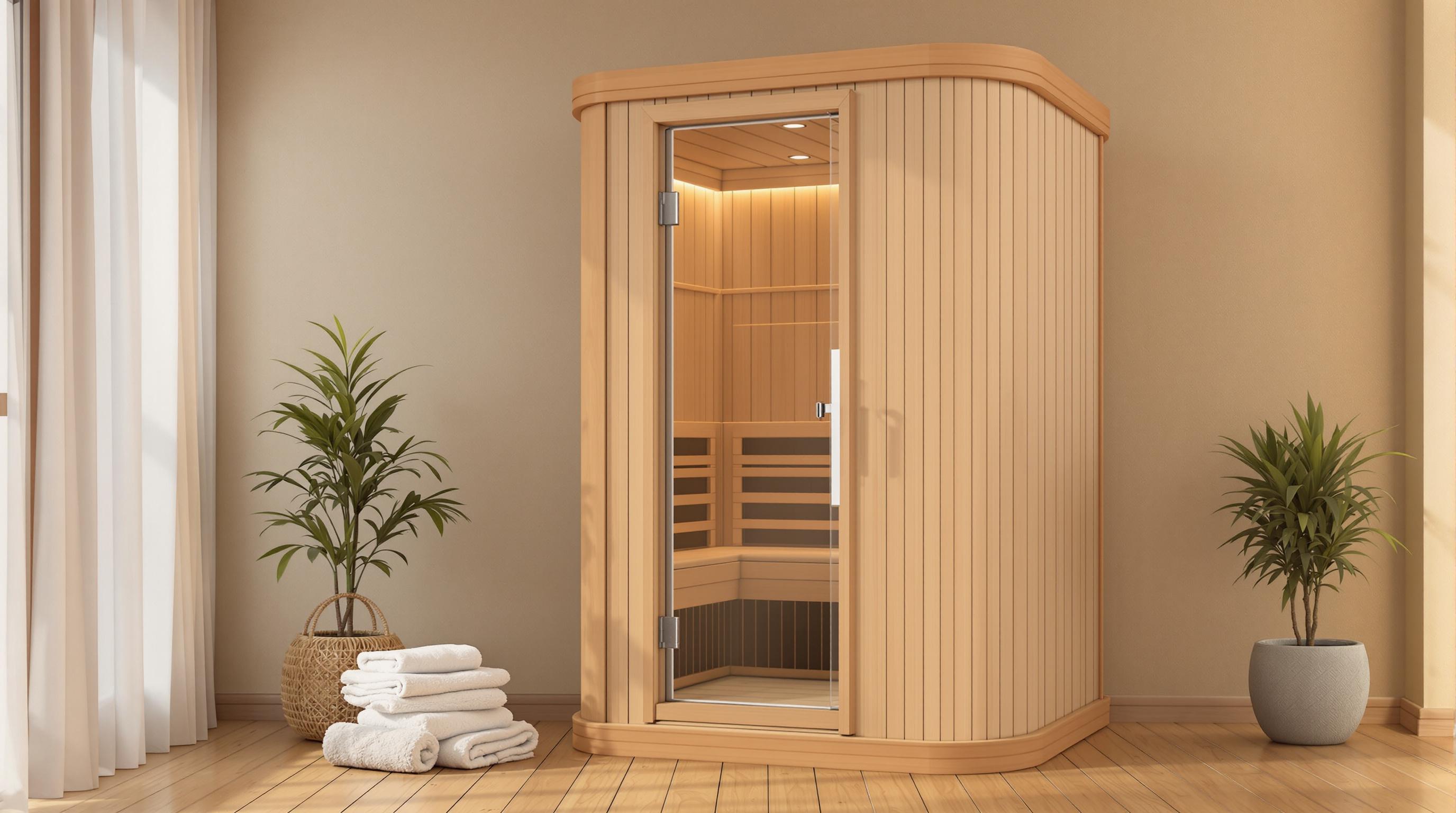Descaling your steam generator regularly prevents limescale buildup, ensuring optimal performance and a longer lifespan. Ignoring it can lead to blocked vents, reduced steam output, overheating, and even costly repairs. Here's what you need to know:
- Why Descaling Matters: Limescale from hard water damages heating elements, reduces efficiency, and increases energy costs.
- How Often: Every 3-6 months, or more frequently in hard water areas or with heavy use.
- Tools Required: Protective gloves, a mask, manufacturer-approved descaling solution, microfiber cloths, distilled water, and a container.
- Methods: Use manual steps (empty, clean, rinse) or an automatic cleaning program if available.
- Prevention Tips: Use filtered water, empty the tank after each use, and clean steam holes regularly.
Regular maintenance keeps your steam generator efficient, safe, and cost-effective. Let’s dive into the details!
Understanding Limescale and Its Effects
What Is Limescale?
Limescale develops when hard water, which contains calcium and magnesium, is heated repeatedly. This process leaves behind mineral deposits that harden over time. In regions with hard water, this buildup happens faster due to higher mineral content. Knowing how limescale forms is key to managing and preventing it effectively [4][7].
Limescale's Impact on Steam Generators
Limescale can seriously impact the performance and lifespan of steam generators. Here's a breakdown of its effects:
| Impact Area | Effects |
|---|---|
| Performance | Blocks steam holes, lowers steam output, and causes uneven heating |
| Efficiency | Consumes more energy, extends heating time, and increases costs |
| Maintenance | Requires frequent repairs, shortens the appliance's life, and risks part failures |
A major concern is its effect on heating elements. Limescale acts as an insulator, forcing these elements to work harder and use more energy to produce steam [1][6]. This not only drives up energy costs but also increases wear and tear on the appliance.
Common signs of limescale issues include reduced steam output, irregular steam flow, strange noises during operation, and higher electricity bills [6][2].
Switching to demineralized or filtered water can help minimize limescale buildup, protecting your steam generator and extending its lifespan [7][2].
With this understanding of limescale and its effects, let’s move on to preparing your steam generator for descaling.
Descaling Steam Generators
Preparing for Descaling Your Steam Generator
Getting ready to descale your steam generator involves a few simple but important steps. Proper preparation ensures the process is safe and effective while protecting both you and your device.
Tools and Materials Needed
Here's what you'll need:
| Item |
|---|
| Protective gloves |
| Safety mask |
| Manufacturer-approved descaling solution |
| Microfiber cloths |
| Distilled water |
| Container |
Stick to the descaling agents recommended in your steam generator's manual to avoid potential damage [3].
Safety Measures
Take these essential precautions:
- Unplug the unit and let it cool for at least two hours before starting [5].
- Ensure the area is well-ventilated to avoid inhaling any fumes [2].
- Wear protective gloves and a mask throughout the process [5].
- Keep your steam generator's manual handy for quick reference [3].
Set up in a well-lit area to easily spot any issues, and place the steam generator on a stable, spill-proof surface [2][3].
Some models may have specific requirements, like anti-limescale cartridges or automatic systems. Double-check your manual for any special instructions [4].
Once you've gathered your tools and followed these safety steps, you're ready to start descaling.
sbb-itb-3953eb0
Descaling Process
Descaling your steam generator can be done manually or with its built-in automatic program. Both methods help remove limescale buildup effectively when followed properly.
Manual Descaling Steps
- Empty and Prepare: Make sure the tank is empty and the unit has cooled down completely. Fill the tank with a descaling solution up to the maximum fill line.
- Run the Generator: Turn on the steam generator at its highest setting for about 4 minutes to let the solution circulate. If steam is released, ensure the area is well-ventilated [4].
- Clean and Dissolve: Let the solution sit for 30 minutes to break down limescale. Afterward, empty the tank, wipe accessible parts with a microfiber cloth (pay close attention to steam holes and nozzles), and rinse thoroughly with fresh water until the water runs clear [4][5].
This process helps maintain your steam generator’s efficiency by clearing out limescale deposits.
Using Automatic Descaling
If your steam generator has an automatic descaling program, it’s a simpler option. Many modern devices use features like anti-limescale cartridges or built-in cleaning programs, requiring minimal effort. These systems typically involve replacing cartridges or running descaling cycles when prompted [2].
Steps for automatic descaling:
- Wait for the maintenance light to signal cleaning is needed.
- Add the descaling solution as instructed.
- Start the cleaning program.
- Let the cycle finish completely [2].
For models with a limescale collector, follow the specific maintenance instructions provided.
Keeping your steam generator free of limescale not only improves performance but also extends its lifespan. Regular maintenance makes all the difference.
Preventing Limescale Buildup
Stopping limescale buildup early is much easier than dealing with a tough, built-up layer later on. A little regular care can go a long way in keeping your steam generator running well and lasting longer.
Regular Maintenance
If you live in a hard water area, aim to maintain your steam generator every 1-2 months. Otherwise, a maintenance routine every 3-6 months should do the trick [6][2]. Here's a simple breakdown of what to do:
Daily Care:
- Empty the tank after every use.
- Wipe down accessible parts with a dry cloth.
- Check the steam holes for any buildup.
Monthly Checks: Look for any mineral deposits, clean the limescale collector, and test the steam output to ensure it’s working efficiently [5][2].
Using Filtered Water
The type of water you use plays a big role in limescale formation. Switching to filtered or distilled water can make a noticeable difference. It helps reduce limescale, lowers maintenance needs, and keeps your steam generator performing well for longer [6][2]. Benefits include:
- Cleaner, smoother steam output.
- Less frequent maintenance.
- A longer-lasting appliance.
- More reliable performance over time.
Conclusion
Regular upkeep and descaling can address up to 70% of limescale problems, helping to extend the life of your appliance and maintain consistent steam quality [1][6].
Follow safety guidelines and use the right descaling agents to clean effectively. To get the best results, set up a maintenance routine based on how hard your water is and how often you use the appliance. In areas with hard water, aim to descale every 1-2 months. For softer water, treatments every 3-6 months should suffice [6][2].
Staying ahead with maintenance ensures your steam generator runs smoothly, avoiding issues like stains, reduced steam output, uneven heating, or even early breakdowns.
For more advice on keeping your steam generator in top shape or choosing the ideal sauna for your home, check out Find the Home Sauna of Your Dreams.
Find the Home Sauna of Your Dreams

Taking care of your steam generator is important, but why stop there? You might want to consider a complete home sauna system to elevate your wellness routine. Find the Home Sauna of Your Dreams offers helpful advice on choosing the right sauna for your lifestyle.
If you're already comfortable with steam generator upkeep, upgrading to a home steam sauna could be the next step. The site provides practical tips on sauna care, including how to descale your steam unit.
| Sauna Type | Key Features |
|---|---|
| Steam Sauna | Classic steam experience, customizable sizes |
| Infrared Sauna | Advanced full-spectrum tech, space-saving |
| Traditional Sauna | Durable build, excellent heat distribution |
For steam saunas, regular descaling is essential to keep everything running smoothly. The site's FAQ section covers common questions about sauna care, including detailed steps for steam unit descaling.
Knowing how to maintain your sauna, especially tasks like descaling, helps ensure it stays efficient and lasts for years.


